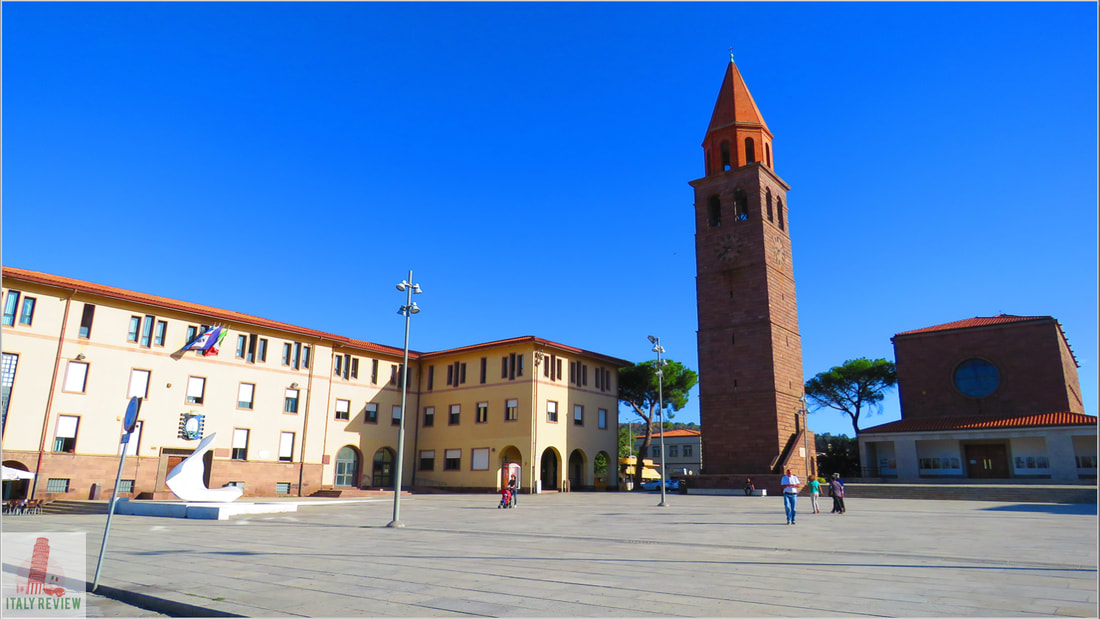Carbonia
|
By Dion Protani
|
Latest update: 21 October 2023
|
|
The city of Carbonia is the capital of South Sardinia Province with a population of 28,009 inhabitants. The province was created in 2016, replacing the now defunct Carbonia-Iglesias.
Standing at an elevation of 111 metres above sea level, it covers a total area of 146 km² and lies 68 kilometres west of Cagliari, the regional capital of Sardinia. Carbonia came into existence only in 1938 when incumbent Fascist leader Benito Mussolini decided to create a town based around the local mining industry. The Italian word for coal is "carbone" and it is from here that Carbonia takes its name. |
The main sights in Carbonia revolve around the central square: Piazza Roma. The centrepiece of the Piazza is the Tower of San Ponziano which stands in front of the eponymous church: the Chiesa di San Ponziano. Across from the main church is a public park with a modern amphitheatre while the majority of shops are on nearby Viale Gramsci.
There are also three museums in Carbonia; the Museo Archaeologico Villa Sulcis is a 5 minute walk (500 m) from Piazza Roma while the Museo del Carbone (Mining Museum) and the Museo dei Paleoambienti Sulcitani (displaying a wide range of geological exhibits), are situated next to each other, two kilometres from Piazza Roma.
There are also three museums in Carbonia; the Museo Archaeologico Villa Sulcis is a 5 minute walk (500 m) from Piazza Roma while the Museo del Carbone (Mining Museum) and the Museo dei Paleoambienti Sulcitani (displaying a wide range of geological exhibits), are situated next to each other, two kilometres from Piazza Roma.
Related links
Profile
Carbonia is a charming town situated in the southwest part of Sardinia, surrounded by rolling hills and picturesque landscapes. It was founded in the 1930s as an industrial center for coal mining, which earned it the name "Carbonia," meaning "coal" in Italian. Today, the town has transitioned from its industrial past and has become a lively and welcoming destination for visitors.
History
Carbonia's history is relatively recent compared to other towns in Sardinia. It was established in 1938 by the Fascist government to accommodate coal miners and their families who worked in the nearby mines. The town was designed according to a rational urban plan, and its architecture reflects the typical style of Italian Fascist architecture from that era.
After the decline of the mining industry in the latter half of the 20th century, Carbonia diversified its economy, focusing on other sectors such as agriculture and tourism.
After the decline of the mining industry in the latter half of the 20th century, Carbonia diversified its economy, focusing on other sectors such as agriculture and tourism.
Highlights and nearby attractions
- Museo del Carbone (Coal Museum): One of Carbonia's main attractions is the Coal Museum, located in the former Lamp room of the Serbariu Coal Mine. It provides insight into the town's mining history, displaying artifacts, equipment, and information about the lives of miners.
- Monte Sirai Archaeological Park: Located just outside Carbonia, this archaeological site offers ancient ruins, including the remains of a Phoenician-Punic settlement and a Nuragic village dating back to the Bronze Age. The site also offers breathtaking views of the surrounding countryside.
- Beaches: While Carbonia is not located directly on the coast, it is a short drive away from some of Sardinia's stunning beaches. Visitors can reach beautiful coastal towns such as Sant'Antioco, Portoscuso, and Calasetta, where they can enjoy sandy beaches and clear waters.
- Events and Festivals: Carbonia hosts various cultural events and festivals throughout the year, celebrating traditions, music, and local cuisine. The most famous event is the Carnevale di Carbonia, a colorful carnival that takes place in February, featuring parades and performances.
- Grotte Is Zuddas: Located about 15 kilometers from Carbonia, these impressive limestone caves offer guided tours, showcasing stunning stalactites and stalagmites.
- Nature: Carbonia is surrounded by natural beauty, making it a great destination for nature enthusiasts. Visitors can explore the nearby countryside, go hiking, or enjoy birdwatching.
Comune di Carbonia
|
Province: capital of South Sardinia
Region: Sardinia Population: 26,250 (source: ISTAT 1 January 2023) Size: 145 km² Elevation: 111 metres Highlights: Tower of San Ponziano, Piazza Roma, museums Close by: Monte Sirai, Sant'Antioco, Iglesias, San Pietro Island Recommended accommodation: Lu' Hotel Carbonia |
Carbonia Travel
Carbonia's main train station (Stazione Carbonia Serbariu) is located a 15 minute walk (1 km) west of Piazza Roma. Trains run east from Carbonia to Cagliari with a journey time of an hour 6 minutes, stopping along the way at Cagliari Elmas Airport (59 minutes). For the nearby town of Iglesias there are buses that take an hour (Line 801), or heading south, you can reach the island of Sant'Antioco in 36 minutes with the 827 bus.
In terms of nearby places of interest; just north of Carbonia lies the 200 metre high Monte Sirai with its archaeological site, while heading south west, it's just a short distance to the island of Sant'Antioco which can be reached via a road bridge. The neighbouring island of San Pietro can be reached either by ferry from Sant'Antioco, or from Portoveseme, the ferry port just to the east of Carbonia.
In terms of nearby places of interest; just north of Carbonia lies the 200 metre high Monte Sirai with its archaeological site, while heading south west, it's just a short distance to the island of Sant'Antioco which can be reached via a road bridge. The neighbouring island of San Pietro can be reached either by ferry from Sant'Antioco, or from Portoveseme, the ferry port just to the east of Carbonia.
|
Public transport: central train station, local buses
By train: Cagliari Airport - 59 minutes, Cagliari - 1 hour 6 minutes |
By car: Cagliari - 56 mins (73 km), Oristano - 1 hr 27 mins (123 km)
Fly to: Cagliari Elmas Airport - 49 minutes by car (68 km) |






















